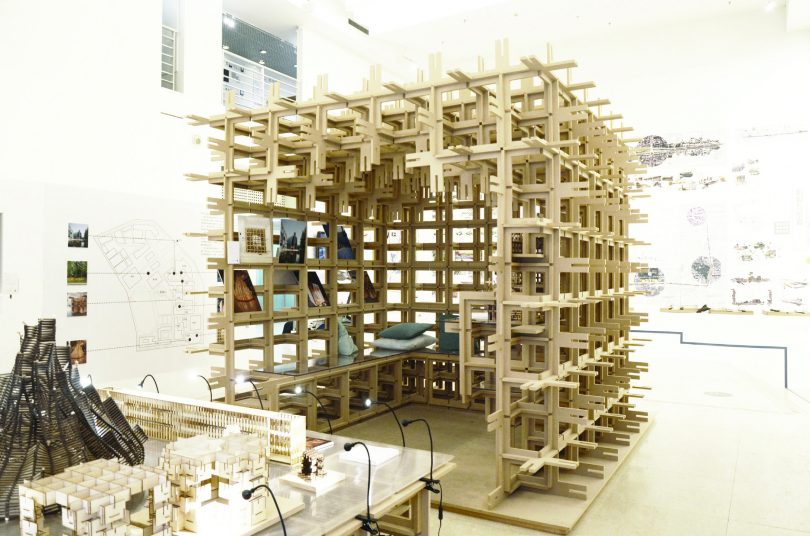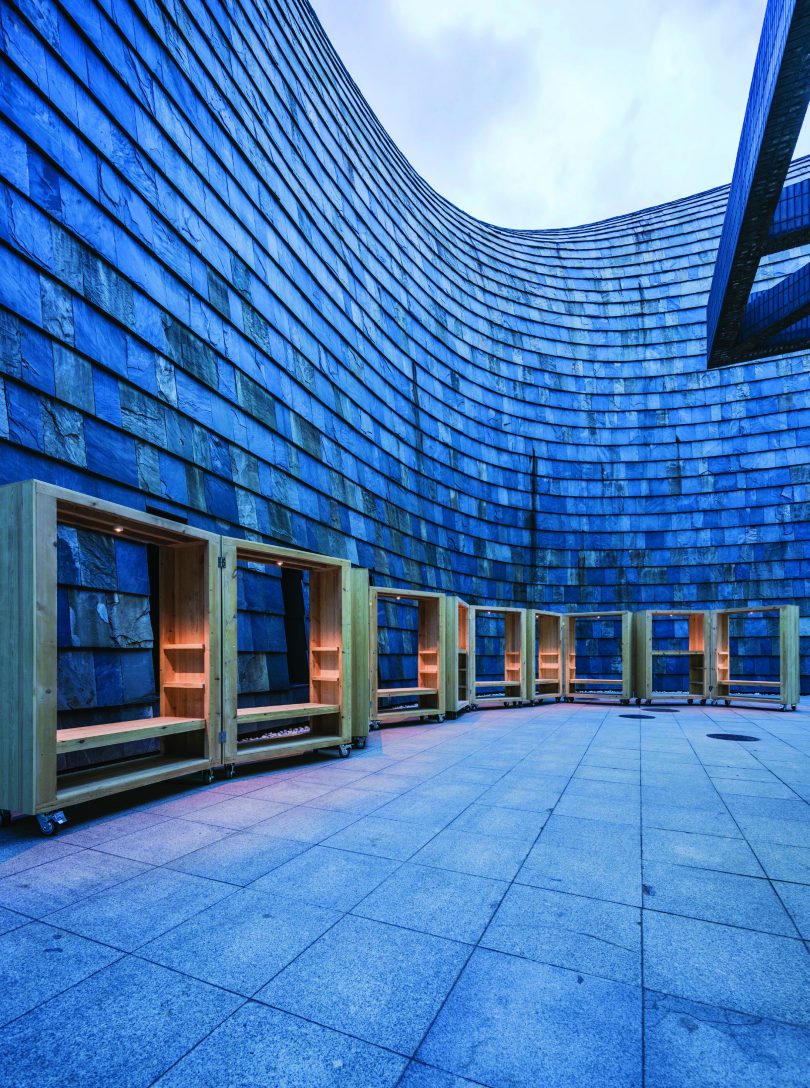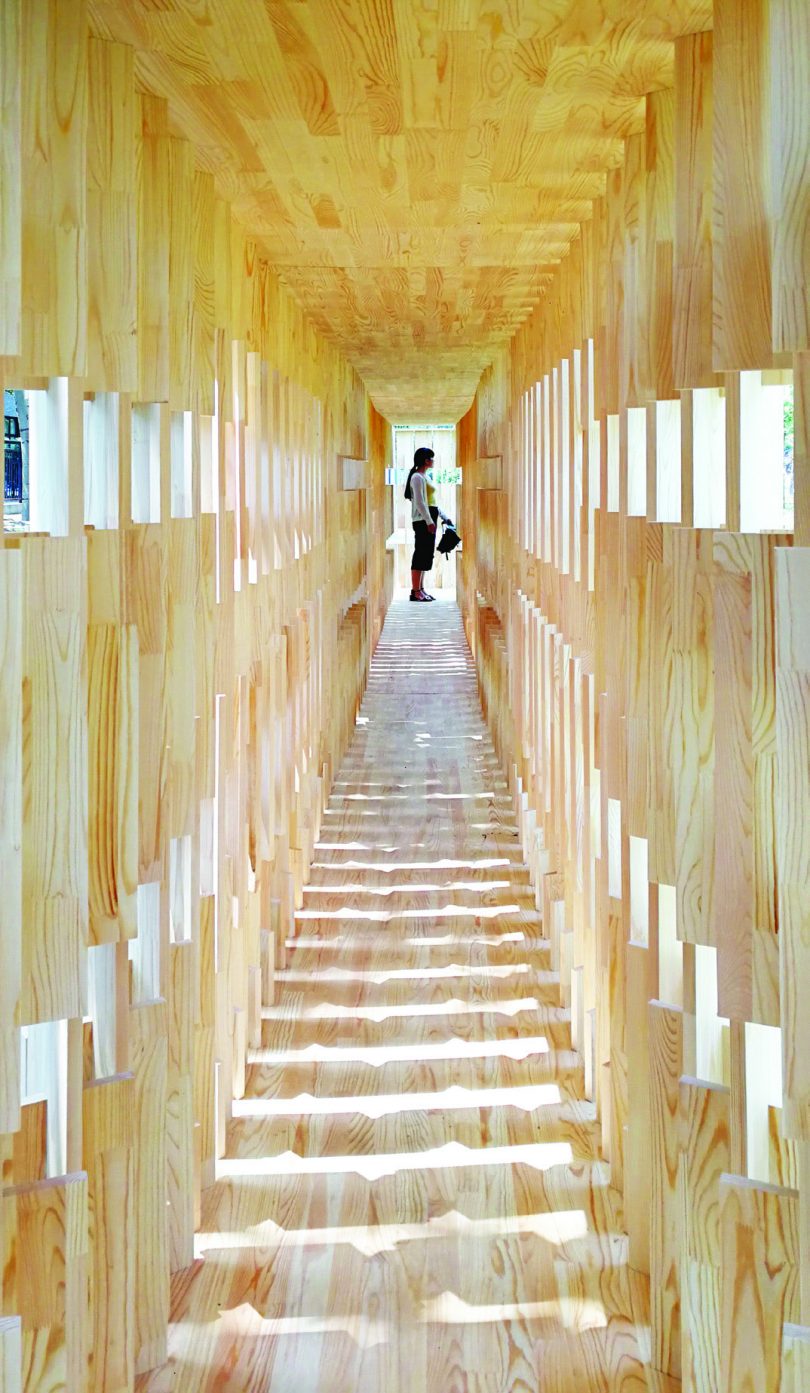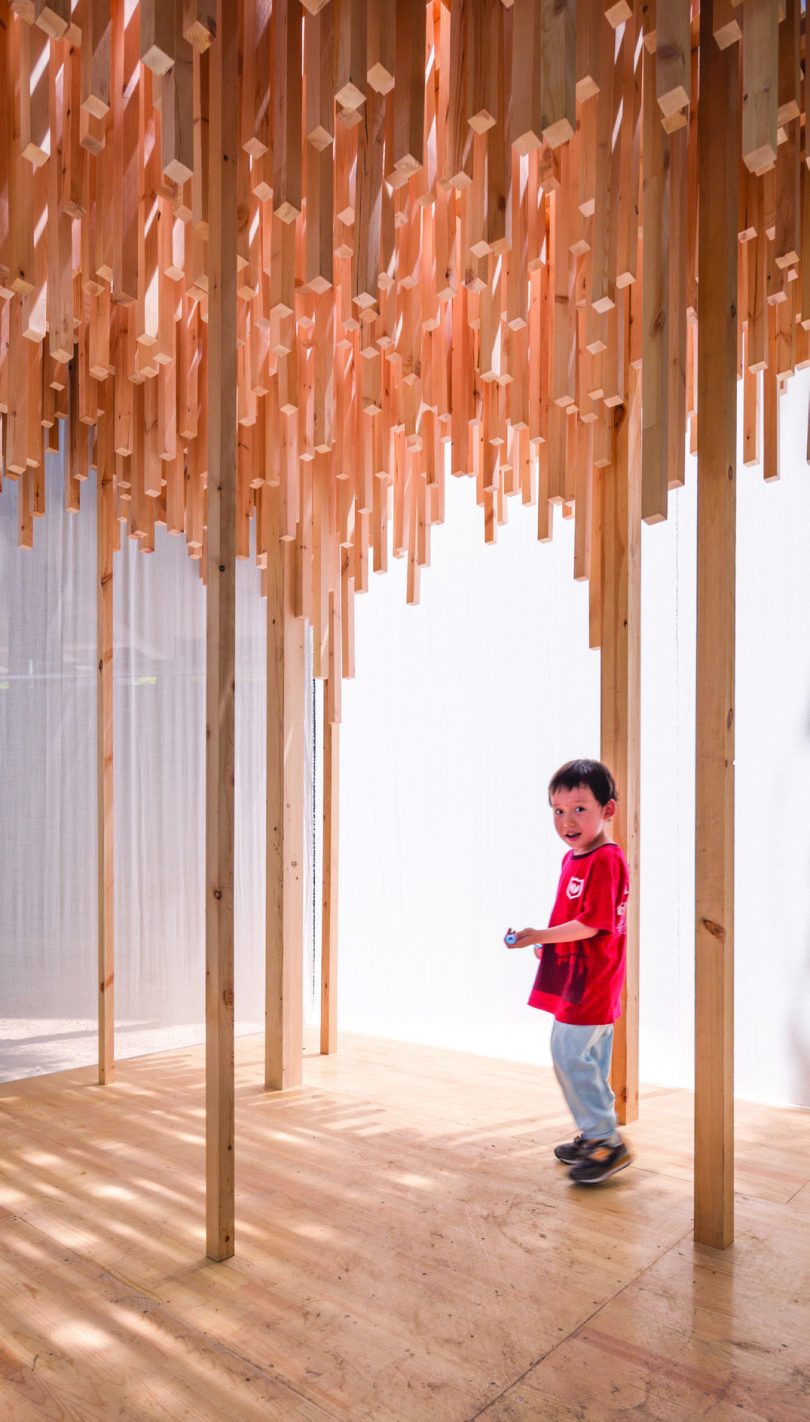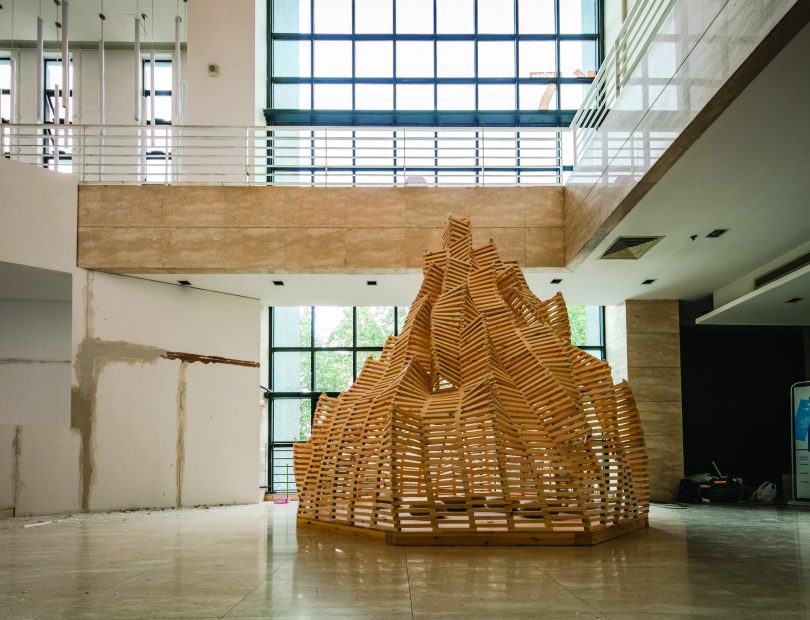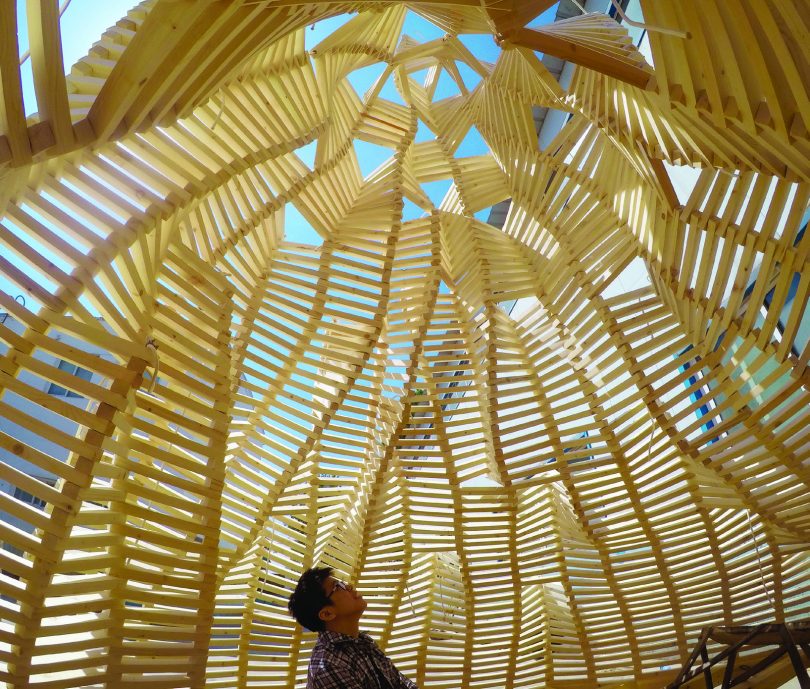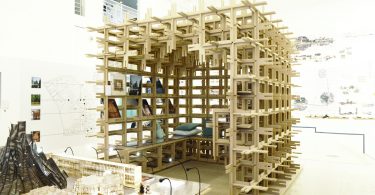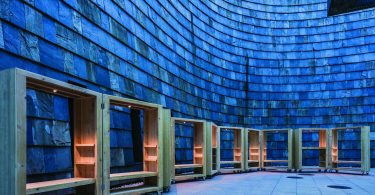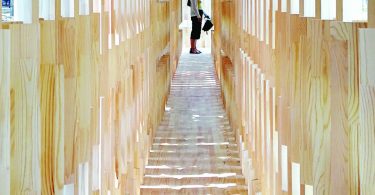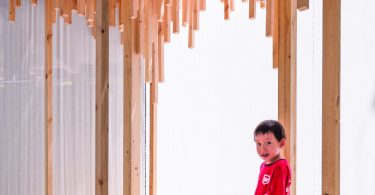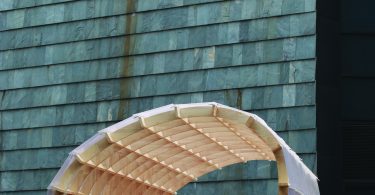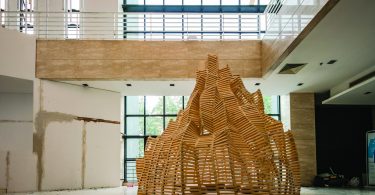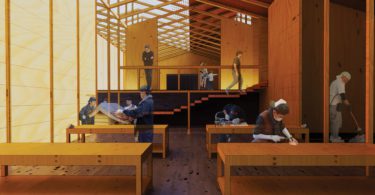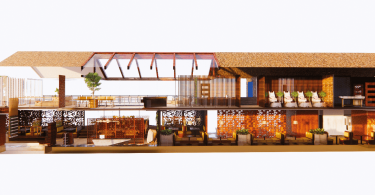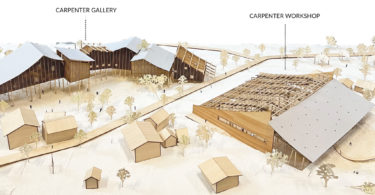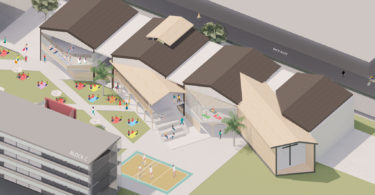Practicing’ was a teaching experiment on space construction by CAFAarchStudio10. Each student was required to create a small structure with envelope enclosure from concept design to construction, so as to achieve experience of the three aspects of scale, material and usage through the whole process—creating space by the way of structure; expressing structure by materials and nodes; and creating a space atmosphere to achieve physical body perception. The experiment content was expected to include handcrafted and scene feeling, material and experiential learning, and immersion teaching and understanding training.
TEACHING AND LEARNING THROUGH PRACTICE
The key teaching points of CAFAarchStudio10’s graduation design were ‘integrated atmosphere design of material and space’, as experimental teaching to explore the materials characteristics, structural logic, assembly technique, and let students get in touch with practice in real life. Meanwhile, architectural materials should express the spatial conception, so as to reach the so-called architectural ‘artisan’. It was hoped that students could experience the whole process from conceptual design to completion, getting experience about scale, materials and usage, as well as training their mind and judgement in making different decisions. Through observing the internal relationship of elements, their skills, abilities and attitude were trained and improved. The labour process was defined as ‘practicing’—returning to be an architect to design and build in practice.
SITE
The graduation project required students tochoose an old district in Beijing, and conduct social research on the site environment and people’s behaviours. It aimed to improve the space and life quality of urban and rural old communities. Every student was required to build within the range of 3*3*3 metres, with building enclosure and small wood structure and shelter. Taking into account the operation and exhibition factors, the campus of the Central Academy of Fine Arts (CAFA) was chosen as the site of the project.
MATERIALS
The main materials used in this project included fingerboard, oak plywood, camphor pine plywood, etc. They were mainly imported materials provided by Beijing Nansen Wood Structure Engineering Co., Ltd. free of charge. The reason for using wood was mainly because it was convenient for processing, transport and building. As they are supposed to be temporarily built, economic factors of specific materials were taken into consideration, in addition to the required strength and structural style of the materials.
STRUCTURES
The final seven structures featured personalised forms based on the full use of wood structure and material properties. ‘Woven Mountain’ wove rope and wood into a mountain. In the face of contemporary industrialised standard section, it formed a corrugated organic space through the traditional weaving method, replacing the latitude and longitude in traditional Chinese weaving. ‘Cloud Forest’ is an abstract translation of rural seclusion, which acts as a non-everyday experience of space fragment in the city, intended to make people slow down in the fast-paced city life. ‘Folding House’ is a 9-square-metre box that can be split into 10 single units and reassembled into a flexible micro-centre for community activity, in order to meet the different needs and scenes to the largest extent. It redefines the relationship between people as well as people and things by changing the box’s spacing. ‘Cumulative Bookstore’ attempted to form the final building volume by the repeated accumulation of several simple wood components, providing the community with a place for reading and communication. ‘Sit Together’ was also formed by the splicing of units, concerning the way people and plants get along. ‘Obstacle’ focused on the relationship between the body and the space. This transcendent and extremely narrow cabin can potentially lead people to flee from the collective unconscious state temporarily. ‘Stream House’ was focused on the dual role of landscape architecture, which acts as a part of the landscape, as well as a viewing spot.
CONSTRAINTS
As this was an initial attempt, the design team could have coordinated more closely with Beijing Nansen Wood Structure Engineering Co., Ltd on the schedule. There was limited time for material testing and there were problems with the fingerboard as a structural material. The team switched to using oak plywood for ‘Stream House’, and density board for ‘Cumulative Bookstore’ temporarily in the outdoors. The weatherability of materials in ‘Obstacle’ also needed to be improved.
In addition, the final construction site was determined at a later stage. Some on-site conditions did not allow for the intervention of small construction equipment. Hence, the plan had to be readjusted, such as reducing the height of ‘Woven Mountain’ and the structure of ‘Cloud Forest’ was also adjusted many times.
Some information was provided by Fu Yi from CAFAarchStudio10.
PROJECT DATA
Student Names: Chen Jiansheng; Liang Yan; Mo Naixin; Wang Jingxuan; Wang Tietang; Yu Jiahan; Zhang Yi
School: Central Academy of Fine Arts
Instructors: Fu Yi; Han Tao; Han Wenqiang
Project Name: Practicing – Teaching Experiment on Space Construction
Location: Central Academy of Fine Arts, Beijing, China
Design Time Lapse: April 2017 to June 2017
Project Execution: CAFAarchStudio10
Construction and Timber Sponsor: Beijing Nansen Wood Structure Engineering Co., Ltd.
Images: Jin Weiqi



